86932
  This is the 2040th issue of vernacular blockchain sharing Author | David Hoffman Compilation | Vernacular Blockchain (ID: hellobtc) Between 2015 and 2017, Bitcoin experienced an internal strife known as the “block size war.” This was a key conflict in Bitcoin's history, with both sides arguing over what they believed to be the right strategy for scaling the Bitcoin network to ensure it could meet growing demand over time. The two factions in this debate are known as big block proponents and small block proponents. Big block proponents advocate increasing the original size of Bitcoin blocks from 1MB to 8MB. This will increase the throughput of Bitcoin transactions by 8 times while reducing transaction costs. Small block proponents advocate keeping the block size unchanged, arguing that increasing the block size will jeopardize Bitcoin's decentralization because it will make the Bitcoin blockchain more difficult for ordinary users to run and verify. Small block proponents eventually proposed an alternative path called Segregated Witness (SegWit), which would optimize the number of transactions that can fit within a block rather than directly increasing the block size. Segwit will also open the door to scaling solutions outside of the core Bitcoin protocol, known as Layer 2 scaling. To better support these views, small block proponents hope to expand in two ways: -Increase block density so more transactions can fit in the same space -Open the door to hierarchical scaling strategies and create space for functional off-chain scaling solutions So this is the debate: should we increase the block size? Or should we keep the block restricted and force expansion to higher levels? 01 Modern big block pie and small block pie The block size debate echoes through the halls of crypto history and still exists today. We no longer call these factions Big Block Faction or Small Block Faction, nowadays people prefer to find more modern factions to identify with, usually defined by a specific first layer (Layer1). Nonetheless, the different philosophical views expressed by the two camps exist within the culture and belief systems of each Layer 1 sect, whether they are aware of it or not. In modern times, the small-block versus big-block debate continues to manifest itself in the Ethereum versus Solana debate. The Solana camp stated that the cost of Ethereum is too high and the speed is too slow to allow global users to get on the chain. Consumers won’t use cryptoassets unless transactions become instant and free, so we need to design as much capacity into Layer 1 as possible. The Ethereum camp sees this as a fundamental compromise on decentralization and trusted neutrality that will create a fixed set of winners and losers, and ultimately create the traditional social financial stratification we are trying to get rid of. Instead, we should focus on increasing the density and value of Layer1 blocks and forcing expansion to Layer2. This debate is nothing new. The cryptoasset landscape changes, adapts, and evolves, but the small block vs. big block philosophy debate remains. 1) Precision block and original block The major innovation of Ethereum from 0 to 1 is the addition of a virtual machine (EVM) inside the blockchain. All chains before Ethereum lacked this key element, and instead attempted to add functionality as individual opcodes rather than a fully expressive virtual machine. Early Bitcoiner philosophy disapproved of this choice because it increased the complexity and attack surface of the system and increased the difficulty of block verification. While both Bitcoin and Ethereum are “small block” philosophy chains, the increased scope of virtual machines has still created a huge divide between the two communities. Fast forward to today, and you can see clear correlations between some of the largest factions in modern blockchain philosophy. 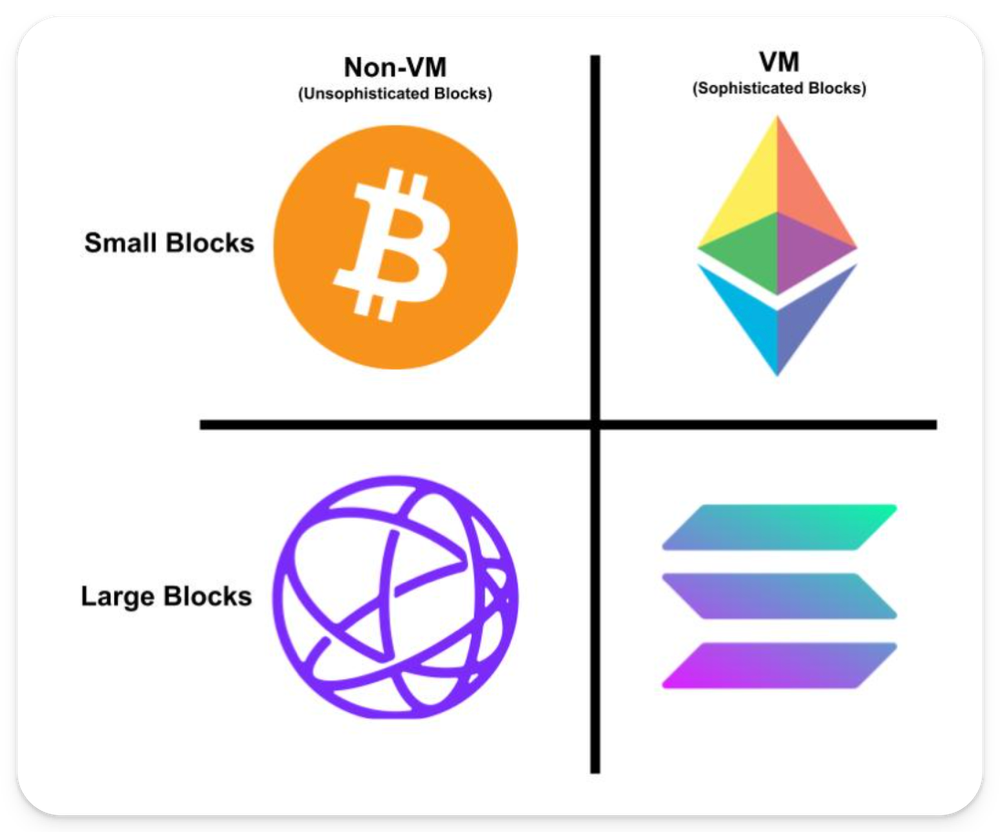 “"Block size" contains two variables: the size of the block and the number of blocks per unit time. In effect, "block size" is "throughput" or "data per second." Although this view may be stuck in 2024, I think these four Layer1 blockchains occupy four different types of valid logical conclusions in Layer1 architecture: - Bitcoin's Layer 1 design is super restrictive, and every possible measure has been taken to limit the capabilities of Layer 1. - Ethereum is sufficiently restricted at the Layer 1 level, but by increasing Layer 1 capabilities, it creates room for unlimited block supply at the Layer 2 level. - Celestia limits its Layer1 capabilities but maximizes its capacity, forcing more features to be pushed to Layer2 but giving them maximized build space (hence the "build anything" slogan). - Solana is ultra-unconstrained, maximizing the capacity and functionality of Layer 1 while limiting the ability to build higher layers. 2) Functional escape velocity My cryptoasset investment thesis is that blockchains that incorporate both small-block and big-block philosophies into their design will ultimately win the crypto gaming throne. Both the small blockers and the big blockers are correct. They all have valid points. There is no point in arguing about who is right and who is wrong, the key is to build a system that maximizes the advantages of both. Bitcoin, as an architecture, cannot accommodate both the small block faction and the large block faction. The Bitcoin small block faction claims that the expansion will occur at Layer 2, and directs large block supporters to the Lightning Network, telling them that they can still enjoy Bitcoin in the Bitcoin system. However, due to the functional limitations of Bitcoin Layer 1, the Lightning Network cannot gain sufficient development, and large block supporters have no other options. An article entitled "Base Layer and Functional Escape Velocity" published by Ethereum founder Vitalik Buterin in 2019 clarified these situations and advocated minimally increasing the functionality of Layer1 so that a functional Layer2 can be produced. “While Layer 1 cannot be too powerful because greater strength means greater complexity and therefore greater vulnerability, Layer 1 must also be strong enough so that Layer 2 protocols can actually be built on top of it.” ““Keep Layer 1 simple and make up for it in Layer 2” is not a universal answer to the blockchain scalability and functionality problem, as it fails to take into account that the Layer 1 blockchain itself must be sufficiently scalable and functional for this “building on top” behavior to actually be possible. My summary: We need to expand the scope of Layer 1 blocks instead of just pursuing small block doctrine to ensure that Layer 2 can achieve "functional escape velocity". We need more complex block designs. However, we should not expand the scope of Layer 1 blocks beyond the point where “Layer 2 functional escape velocity” is achieved, as this would unnecessarily compromise Layer 1’s decentralization and trusted neutrality. Any additional Layer1 functionality can be pushed to Layer2 for implementation. We should stick to the small block philosophy. This represents a compromise between both parties. Small block proponents must accept that their blocks become more sophisticated and (slightly) harder to verify, while large block proponents must accept a layered scaling approach. Once this compromise is reached, synergies arise. 02 Typical cases 1) Ethereum Layer1 - the foundation of trust Ethereum is a foundation of trust. Ethereum Layer 1 maintains its small block philosophy by leveraging advances in cryptography to achieve functional escape velocity at higher levels. By accepting proofs of fraud and proofs of validity from higher levels, Ethereum can effectively compress a nearly unlimited number of transactions into easily verifiable bundles that are then verified by a decentralized network of consumer hardware. This design architecture preserves the crypto industry’s fundamental commitment to society. Ordinary validators can check the power of experts and elites, everyone has equal access to the system, no privileged parties, no sacred status. The crypto industry made a philosophical promise, and Ethereum translates that philosophy into reality through cryptographic research and traditional engineering techniques. Imagine that there are small blocks at the bottom and large blocks at the top, that is, decentralized, trustworthy, neutral, and verifiable consumer blocks on Layer 1, and highly scalable, instant, and cheap transactions on Layer 2! Rather than viewing small blocks and large blocks as a continuum of horizontal trade-offs, Ethereum flips the continuum vertically and builds a large block structure on top of secure, decentralized small blocks. 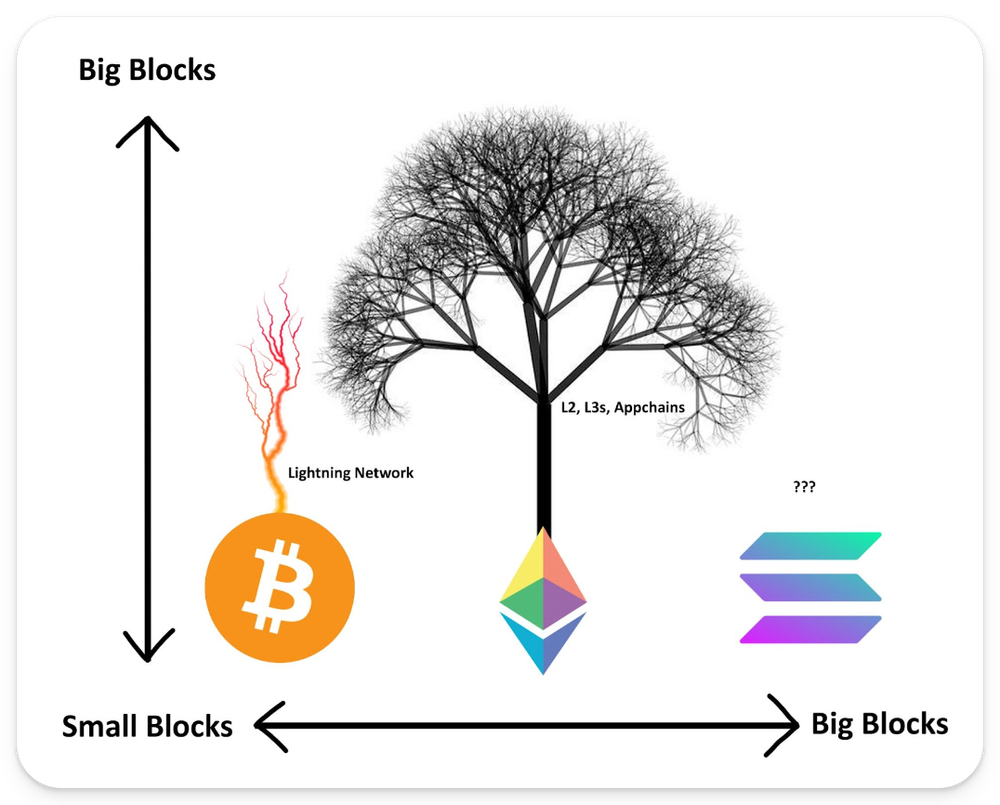 Ethereum is the anchor point for small blocks in a world of big blocks. Ethereum allows 1,000 large block networks to bloom and generate synergies from a consistent and composable ecosystem, in contrast to the fragmentation of many Layer 1s. 2) Cosmos: The Lost Tribe OK, but where does Cosmos fit into this argument? Cosmos does not strictly adhere to any network design alignment. After all, there is no "Cosmos" network, Cosmos is just an idea. The idea is a network of interconnected sovereign chains. Each chain has maximum and uncompromising sovereignty, and through shared technical standards, they can be united to a certain extent and abstract away their respective complexities to a certain extent. 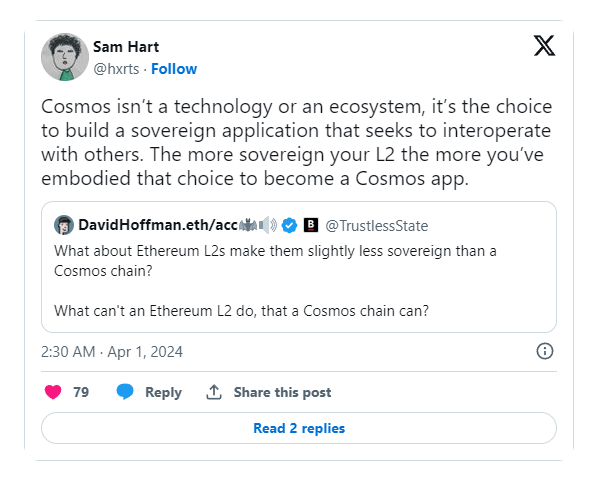 Translation: Cosmos is not just a technology or an ecosystem, it represents a choice: the choice to build an application that is independent and interoperable with other applications. The more independent your Layer 2 is, the more it reflects your choice to become a Cosmos application. The problem with Cosmos is that it insists on sovereignty so much that the Cosmos chain cannot coordinate and build itself well enough to share each other's successful experiences. Overemphasis on sovereignty will bring too much chaos to the development of the universe. The overwhelming pursuit of sovereignty inadvertently optimizes anarchy. Lacking a central coordinating structure, the idea of Cosmos has remained niche. 03 synergy Similar to Vitalik's concept of "functional escape velocity", I believe there is also a phenomenon of "sovereign escape velocity". In order for the Cosmos idea to truly take hold and thrive, it will need to make some small compromises on network sovereignty to maximize its potential. The Cosmos concept and the Ethereum Layer 2 vision are basically the same thing. It is a horizontal landscape composed of independent, sovereign chains that have the right to choose their own destiny. 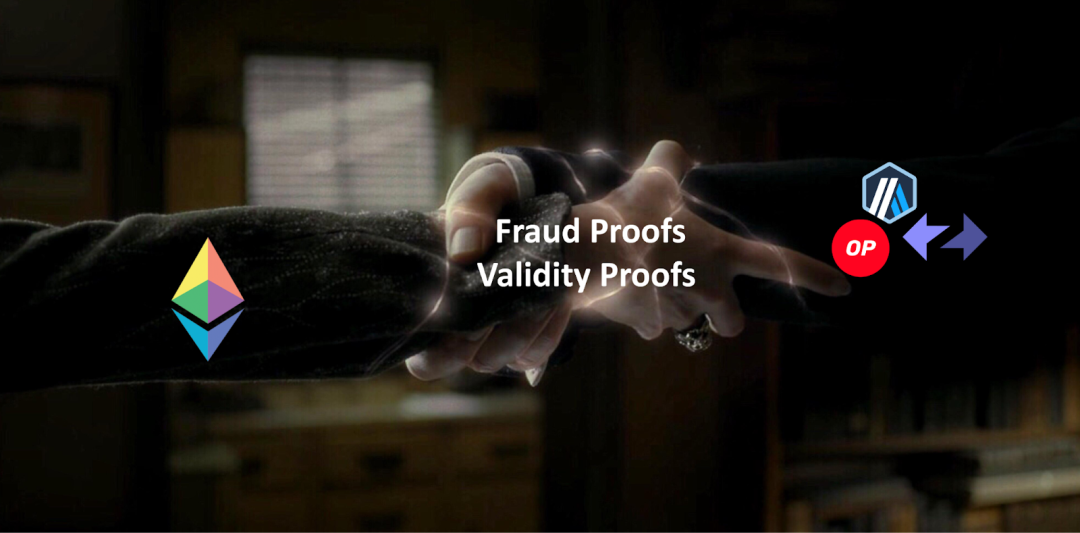 "The Indivisible Vow" scene from "Harry Potter" The core difference is that Ethereum Layer 2 sacrifices some of its own sovereignty and publishes its state to their Layer 1 bridge contract. This small change changes the previous internal operation to an external operation, by selecting a centralized Layer1 for local bridge settlement. By extending the security and settlement guarantees of Layer 1 through cryptographic proofs, the unlimited Layer 2 developed from the foundation of Ethereum becomes essentially the same global settlement network. This is where extraordinary synergies emerge between the small block and big block philosophies. 1) Synergy 1: Chain security Layer 2 chains do not have to pay for their own economic security, thus eliminating much of the network inflation of the underlying assets, retaining 3-7% of the annual inflation rate within the value of their respective tokens. Take Optimism as an example: in its $14 billion FDV (Fully Diluted Valuation), it refers to taking into account all issued tokens of the crypto project, including currently circulating tokens and tokens that have not yet been released, to determine the total market value of the project. Formula: FDV = current price of circulating tokens × total number of issued tokens), assuming an annual security budget of 5%, which actually means that there is $700 million unpaid to third-party external security providers every year. In fact, Optimism Mainnet paid $57 million in gas fees to Ethereum Layer 1 over the past year, and this was measured before the arrival of EIP-4844, an upgrade that reduced Layer 2 fees by more than 95%! The cost of economic security drops to zero, leaving DA as the only meaningful ongoing operating cost for Layer 2 networks. Since the DA cost is also close to zero, the net cost of Layer2 is also close to zero. By creating sustainability for Layer 2 chains, Ethereum can unleash all chains in market demand, creating more total chain sovereignty than the Cosmos model can generate. 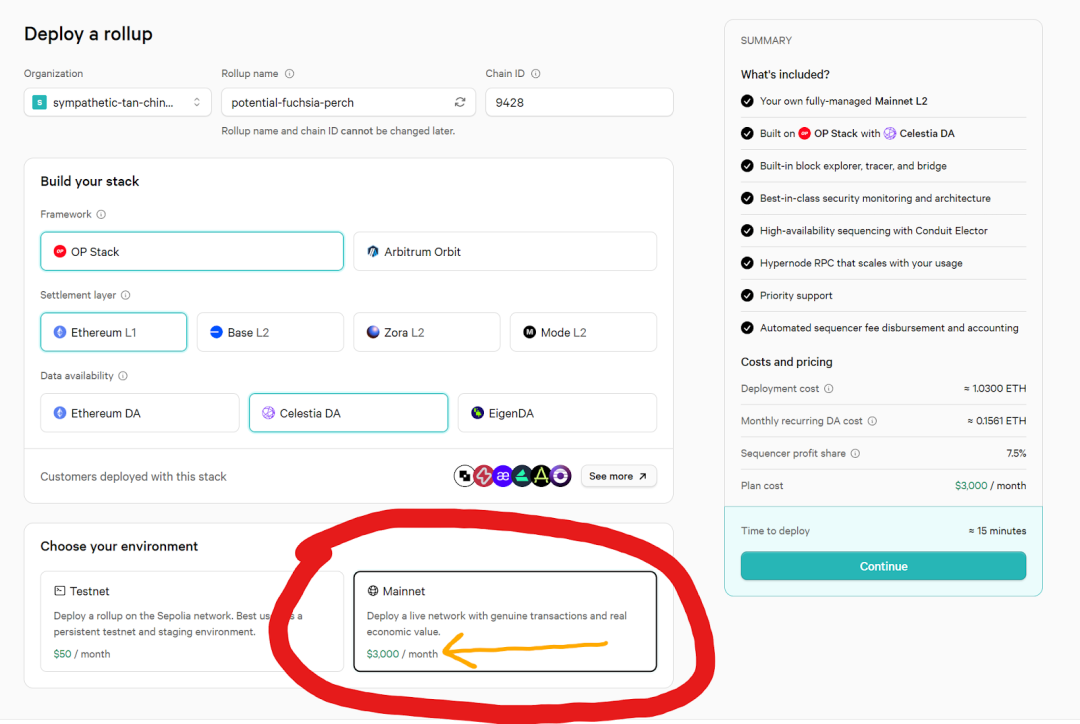 Conduit.xyz can build a chain for you per month for $3,000 2) Synergy 2: Composability Layer 2 customer acquisition costs also become marginal, as cryptographic proof settlement to Layer 1 provides a trusted connection between all Layer 2s. By retaining the settlement guarantees of Layer 1, users can shuttle through Layer 2 without having to 'test' every chain they touch. Naturally, users won't engage in this activity either, but service providers who offer chain abstraction services (bridging, intent fillers, shared sequencers, etc.) can offer a more robust service if they have uncompromising security on the foundation of the business they are building. Additionally, as many Layer 2 chains come online, each Layer 2 will attract its own edge users into the larger Ethereum ecosystem, creating a cluster effect. Since all Layer 2 add their users to the "heap", as the network grows, the total number of Ethereum users becomes larger, making it easier for edge Layer 2 chains to find enough users. 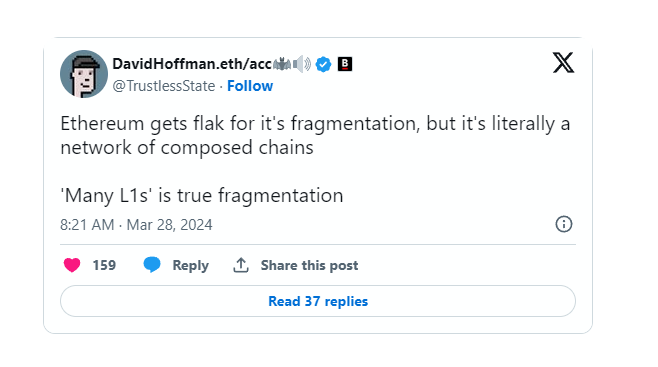 Translation: Ethereum has been criticized for its fragmentation, but it is actually a network of composed chains. “Many L1" is the real fragmentation. Ethereum has been criticized for being “split,” which is a travesty because it’s the opposite of reality: Ethereum is the only network that has cryptographically proven networks that connect other sovereign chains together. In contrast, many Layer 1 spaces are completely and completely fragmented, while Ethereum’s Layer 2 space is only affected by delays. 3) Synergy 3: Unit of Account All of these benefits focus on the consensus point of ETH as an asset. The more network effects there are around the Ethereum ecosystem, the more powerful ETH will be. ETH becomes the unit of account for all its Layer 2 networks because each Layer 2 network creates economies of scale by centralizing security into Ethereum Layer 1. Simply put, the continued growth of Ethereum’s distributed settlement network enables ETH to become a currency. 04 in conclusion The Ethereum project pursues a unified architecture that covers the widest possible range of use cases. This is a network that can do it all. The combination of small but powerful Layer1 is the foundation needed to open up the widest design space in Layer2. Early Bitcoin supporters often said: “If it works, it will eventually be built on Bitcoin. ”I completely believe in the concept, I just think Ethereum is the more optimized network because that's what Ethereum has been optimized for. Preserving the values of the cryptocurrency industry happens at Layer1. Decentralized, censorship-resistant, permissionless and trustworthy. If these can be maintained on L1, then they can be functionally extended across an unlimited number of L2s that are cryptographically bound to Layer1. In the battle for the cryptocurrency throne, the core investment thesis for Ethereum is that any other Layer1 can either be better built as a Layer2 or integrated into it as an L1 feature. Do you want lightspeed consensus? It will be faster as Layer2. Do you want a completely private blockchain? It will be more efficient as Layer2. DA as a blockchain? Why not just be established on Layer1. Eventually, everything will become a branch on the Ethereum tree. Original title: The Unified Architecture of Ethereum Original link: https://www.bankless.com/the-unified-architecture-of-ethereum Original author: David Hoffman Compiled by: Vernacular Blockchain END Previous article: What are the recent changes in public chain infrastructure such as ETH that are worth paying attention to? Recommended reading Can Solana, with its ecological explosion, make Ethereum the king of public chains? Bitcoin popular second-level inventory (Part 1) Bitcoin popular second-level inventory (Part 2) From being ignored to becoming the "cool hero", why did Solana break through in the reconstruction of the public chain? Memecoin Chronicles: Past, Present and Future 『Statement: This article is the independent opinion of the author and does not represent the position of vernacular blockchain. This content is only for popular science learning and communication among crypto enthusiasts. It does not constitute investment opinions or suggestions. Please treat it rationally, establish correct concepts, and improve risk awareness. The copyright and final interpretation rights of the article belong to Vernacular Blockchain. 』 If you like it, please click "Looking"👇 |